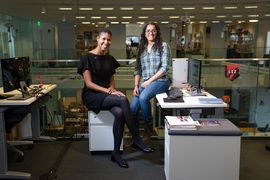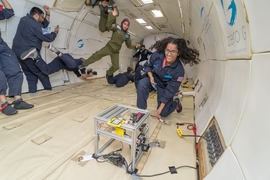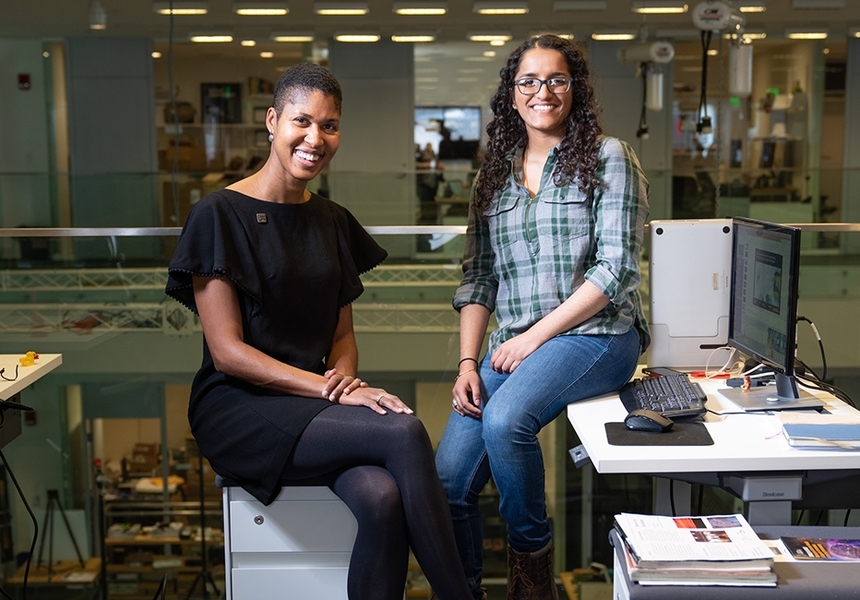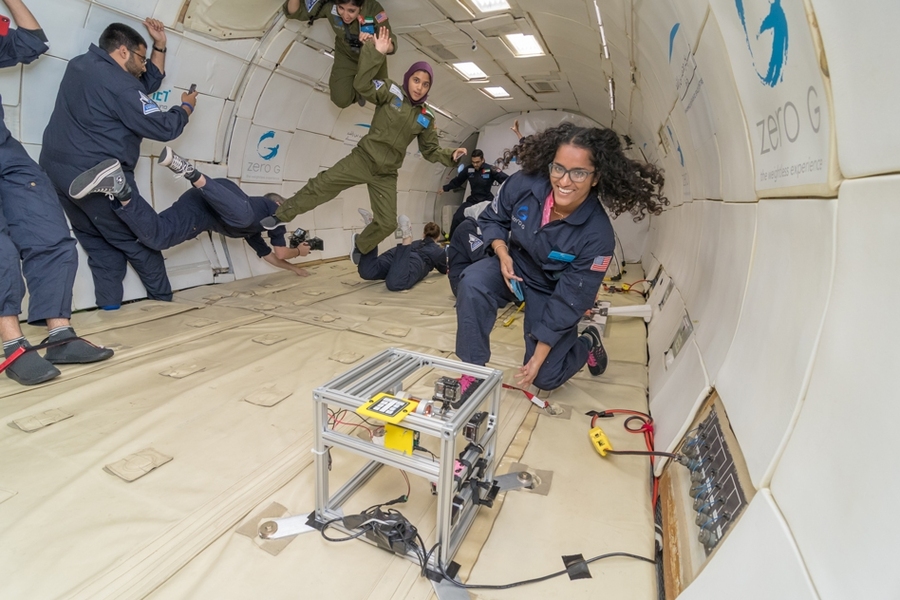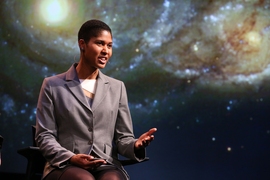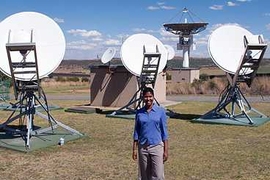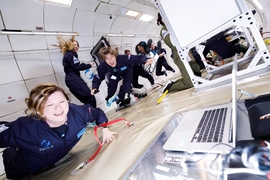For nearly 20 years, the International Space Station (ISS) has served as a singular laboratory for thousands of scientists, students, and startups around the world, who have accessed the station’s microgravity environment to test how being in space impacts everything from cancer cells and human tissues to zucchini and barley seeds — not to mention a host of living organisms including flatworms, ants, geckos, and bobtail squids.
Indeed, the ISS “has operated as a bastion of international cooperation and a unique testbed for microgravity research,” write MIT engineers in a paper they presented on March 8 at the IEEE Aerospace Conference in Montana. But the ISS will eventually be retired in its current form. NASA is preparing to transition the focus of its human space flight activities to the Moon, and the international partners that manage the ISS are discussing how to transition out of the current operational model.
As NASA explores options for commercial entities to operate research platforms in orbit around Earth, and while other public and private entities consider alternative designs for microgravity facilities, the MIT team says it’s important to keep affordable access to such facilities at the forefront of these discussions. In their paper, the researchers argue that scientists from any country should be able to participate in microgravity research.
Toward that end, the team has developed a tool for evaluating the accessibility of various “governance models,” such as facilities that are controlled by mostly governments or private entities, or a mixture of both.
MIT News checked in with the researchers about the future of microgravity research and how openness can drive innovation and collaboration in space. Christine Joseph is a graduate student in MIT’s Department of Aeronautics and Astronautics and the Technology and Policy Program. Danielle Wood is the Benesse Corporation Career Development Assistant Professor of Research in Education within MIT’s Program in Media Arts and Sciences and jointly appointed in the Department of Aeronautics and Astronautics. She is also founder of the Space Enabled Research Group within the MIT Media Lab, whose mission is to advance justice in Earth’s complex systems using designs enabled by space.
Q: Why is affordable access important, particularly for space-based microgravity research?
Wood: Participation in space-based microgravity research should be an opportunity open to researchers from every nation because space is a global commons that does not belong to a single nation. As stated in the Outer Space Treaty, ratified by over 100 countries, “the exploration and use of outer space … shall be carried out for the benefit and in the interests of all countries … and shall be the province of all [hu]mankind.”
Studies in the microgravity environment bring new knowledge about the human body, plants, animals, materials, physics, manufacturing, and medicines. This knowledge can contribute to sustainable development when it is translated into Earth-based applications, such as when knowledge of astronaut exercise routines informs recovery procedures for patients facing long periods of bedrest, or when experiments about the physics of combustion yield results that can improve fire safety on Earth.
When a larger variety of researchers from around the world participate in microgravity research, the scientific community benefits from the broader range of research outcomes. Participation in microgravity research also helps countries that do not yet have experience in space build local capability to design and operate space-based experiments.
Q: How does your new tool evaluate accessibility to microgravity research facilities?
Joseph: We propose that accessibility can be measured using the metrics of economic and administrative openness. Economic openness is based on the financial costs paid by researchers to perform all the activities involved with completing a microgravity research project. This includes the costs associated with designing an experiment, engineering it to be safe and functional, launching it to space, accessing a facility that provides environmental control, data and power, operating the experiment, and possibly returning it to Earth.
Administrative openness refers to the type of gatekeeping that directly and indirectly determines who can participate. For example, today administrative procedures influence access depending on the nationality or type of organization the user comes from and the type of microgravity activity they are seeking. We map future microgravity research facilities and their governance policies along these dimensions of economic and administrative openness. Using these two metrics, we can rate the overall accessibility of a future marketplace for microgravity research.
Wood: Our goal is to encourage a dialogue about the value of providing access to this unique research environment. Many stakeholders — governments, companies, international organizations — may influence the rules that determine who sends micrgravity research to space after the International Space Station is retired. Thus far, the world has not experienced a microgravity research marketplace that is fully driven by commercial forces with prices set by a free market, because governments have subsidized the cost of research access as a public service. This work highlights the need to evaluate future policy and commercial proposals based on the needs of those that have the least access and experience with microgravity research today.
Q: What type of facility or structure have you found, through your tool, can provide the most affordable access to microgravity research, and what will it take to launch such a model?
Joseph: Although not ideal, our current structure has evolved to become surprisingly accessible. Faciliators like the United Nations Office for Outer Space Affairs help to broker access for emerging space nations by working with some of the “gatekeeper” space agencies that built the ISS. Commercial companies have also started to build and operate their own modules attached to the ISS that almost any user can buy access to. The ISS has become this interesting conglomeration of public, private, commercial, and international entities. So far, none of the other proposals for space stations in low Earth orbit (up to about 2,000 kilometers from the Earth’s surface) are mature enough to determine whether they will have a similar level of accessibility as the current environment.
However, we can always do better. Building the ISS was the single largest and most expensive construction project in human history and it involved effort from many countries. There are a lot of lessons to be learned from the development of the ISS in terms of technical and policy models. We also need to take into account the expectations of the commercial companies that will participate in the emerging commercial space economy in low Earth orbit.
The “spaces in space” that we operate in are evolving dramatically. It is not too early to examine how policies and investment decisions will shape the nature of accessibility for microgravity research beyond the International Space Station. Thinking about accessibility now is important to help ensure that microgravity research remains the province of all humankind.
